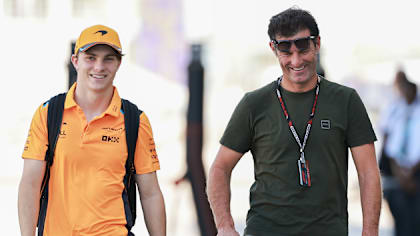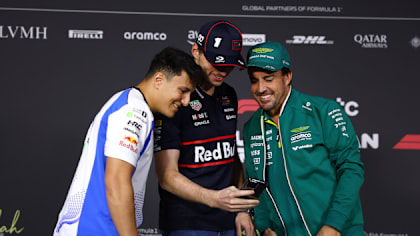
18 - 20 April
Technical
TECH TUESDAY: A close look at the halo – and how it ‘saved Hamilton’s neck’ in Monza crash

Share

The halo device was once again lauded after a dramatic crash at the last Grand Prix in Italy, despite being a controversial development when it was first introduced to F1. In this week's Tech Tuesday, Mark Hughes looks at the device, its conception, and how it protected Lewis Hamilton in that collision with Max Verstappen at Monza...
“Honestly, I feel very, very fortunate today,” said Hamilton after his coming together with Verstappen at Monza last week, when the Red Bull vaulted over the engine cover of Hamilton’s Mercedes, sliding over the cockpit halo as it went. “Thank god for the halo. That ultimately saved me. And saved my neck.”
READ MORE: Hamilton says halo ‘saved my neck’ in Monza, and gives his take on Verstappen’s penalty
The halo met with considerable opposition when it was first introduced to F1 (and other FIA single seater formulae) in 2018 because of the aesthetics and the philosophic step away from fully open cockpits which had always been intrinsic to single-seater racing.
But such criticism has largely been silenced as the feature has quite possibly saved the lives of Charles Leclerc (at Spa 2018), Romain Grosjean (Bahrain 2020), Valtteri Bottas (at Imola this year in his accident with George Russell when the Williams reared into the side of the Mercedes cockpit) as well as Hamilton at Monza.
After his miraculous escape at Bahrain last year Grosjean said: “I wasn't for the halo some years ago, but I think it's the greatest thing that we brought to Formula 1 and without it I wouldn't be able to speak to you today.”
Watch Hamilton and Verstappen's Monza crash in 360
The original idea
Serious research into some form of cockpit protection began around seven years ago. There had been a spate of injuries (Felipe Massa in F1) and fatalities (Henry Surtees in F2 and Justin Wilson in Indycar), and drivers – notably Jenson Button – began to speak out about the need for greater protection from bouncing wheels or cockpit intrusion of components from other cars in a crash.
Red Bull worked on a jet-fighter-like cockpit canopy visually quite similar to that later introduced to Indycar. But it was Mercedes who came up with what came to be known as the halo – presenting it in 2015 (below).

A preview of the halo on the 2015 Mercedes F1 car
Extensive testing of both ideas was undertaken by the FIA, including firing an F1 wheel and tyre at the cockpit (below).
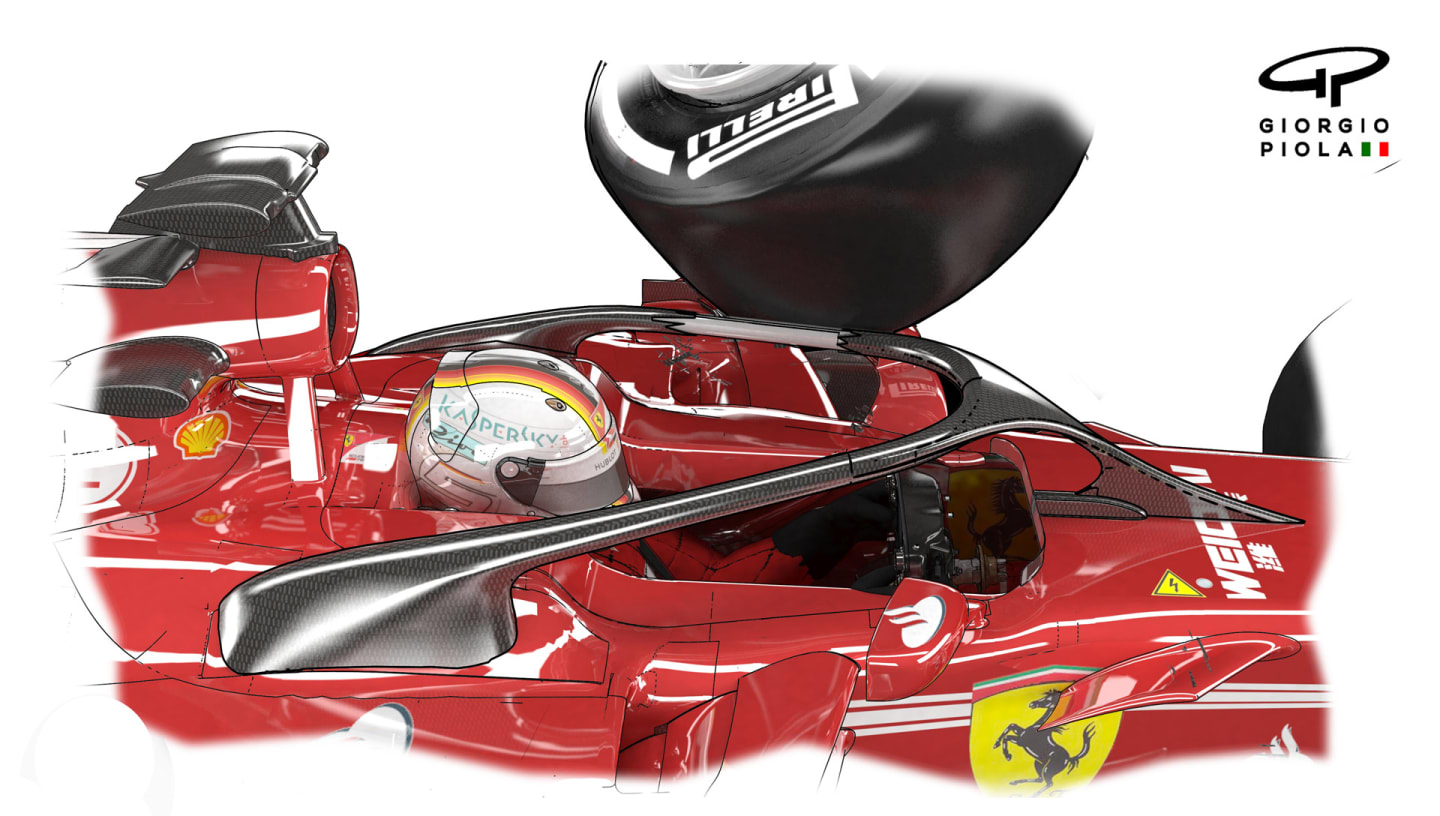
As a result of these tests the Mercedes design was chosen for implementation in 2018. In the meantime, for 2016 the cockpit rim test was increased in severity from 15kN to 50kN and the height of the side protection was increased by 20mm (below). A kilonewton (kN) is a measure of force, 1 kN being the amount of force required to move 1kg at a speed of one metre-per-second, for 1s of time.

The cockpit sides needed to withstand more force in 2016, and the height of the side protection (red arrow, above) was increased too
The regulations behind Hamilton’s protection
In Hamilton’s Monza accident, Verstappen’s car, after damaging the Mercedes’ rear wing, rose up over the engine cover, crashing over the cockpit roll hoop (known as the primary roll structure in FIA regulations) and thence the halo (secondary roll structure) before then sliding off into its resting place in the gravel trap.
Let’s look at what tests each of those roll structures must pass before the car can even take to the track.
READ MORE: Imola ‘94 and the lasting safety legacy
Regulations for the roll hoop state: A load equivalent to 50kN laterally, 60kN longitudinally in a rearward direction and 90kN vertically, must be applied to the top of the structure through a rigid flat pad which is 200mm in diameter and perpendicular to the loading axis. During the test, the roll structure must be attached to the survival cell which is supported.
Under the load, deformation must be less than 25mm when measured along the loading axis and any structural failure limited to 100mm below the top of the roll structure when measured vertically.
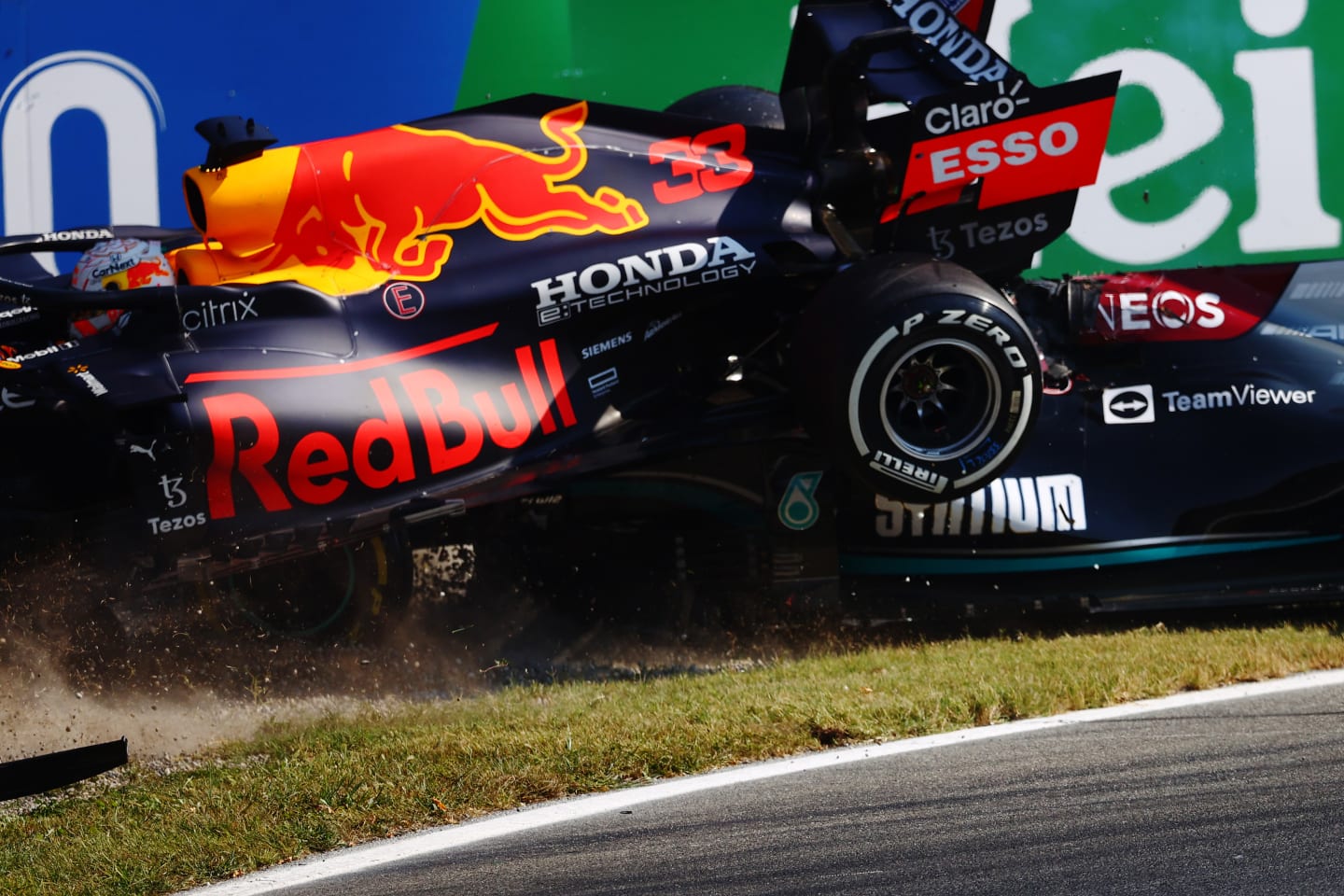
The tyre of the Red Bull made contact with the Mercedes' halo in the Monza crash
Those for the halo are similarly extreme: A load equivalent to 116kN vertically downward and 46kN longitudinally rearward must be applied at a position 785mm forward of the plane C-C and 810mm above the reference plane and positioned on the car centre plane… A load equivalent to 93kN laterally inward and 83kN longitudinally rearward must be applied at a position 590mm forward of the plane C-C and 790mm above the reference plane to the outer surface of the structure.
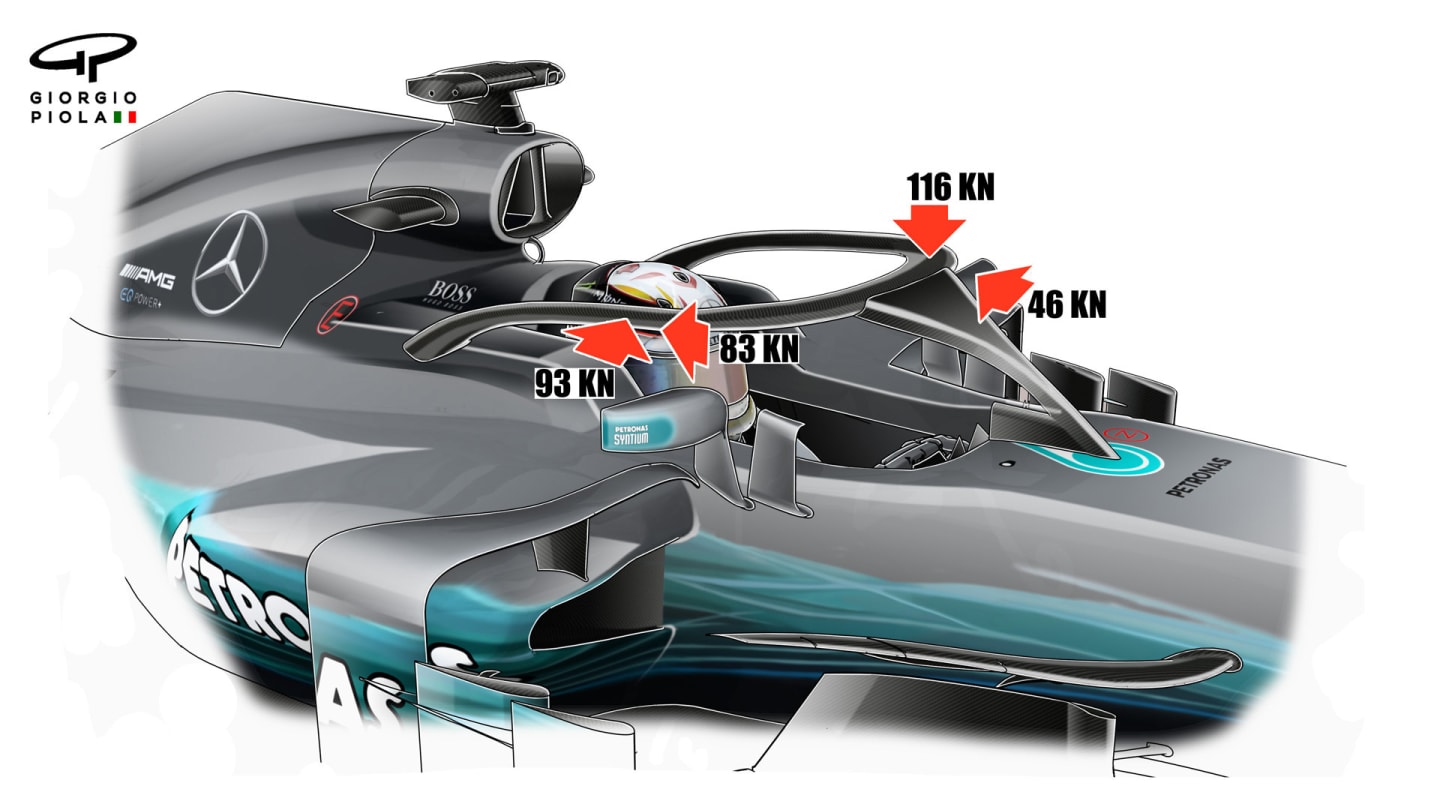
The forces applied to the halo during 2018 crash tests
These tests must be undertaken within three minutes of each other and the forces must be maintained for at least 5s during which there can be no failure of any part.
As Mercedes' James Allison summarised at the halo’s introduction: “We had to strengthen the design of the chassis so it would be able to take roughly the weight of a London double decker bus sitting on top of the halo.”
Although Verstappen’s tyre made contact with Hamilton’s head as it passed over the halo, because the weight of the car was being supported by the halo, it was not a serious impact and Hamilton emerged with only a sore neck.
Safety is a constant campaign and there will doubtless be further improvements made in the wake of the Monza accident.
YOU MIGHT ALSO LIKE
News ‘It’s not impossible’ – Hamilton expands on key area he’s looking to work on to get to grips with Ferrari car
News Piastri's manager Mark Webber reveals how Australian has stepped up against 'serious artillery' of his opposition in 2025
FeatureF1 Unlocked THIS WEEK IN F1: 10 tough quiz questions on the Bahrain Grand Prix
Live Blog AS IT HAPPENED: Follow all the build-up ahead of the Saudi Arabian Grand Prix weekend






